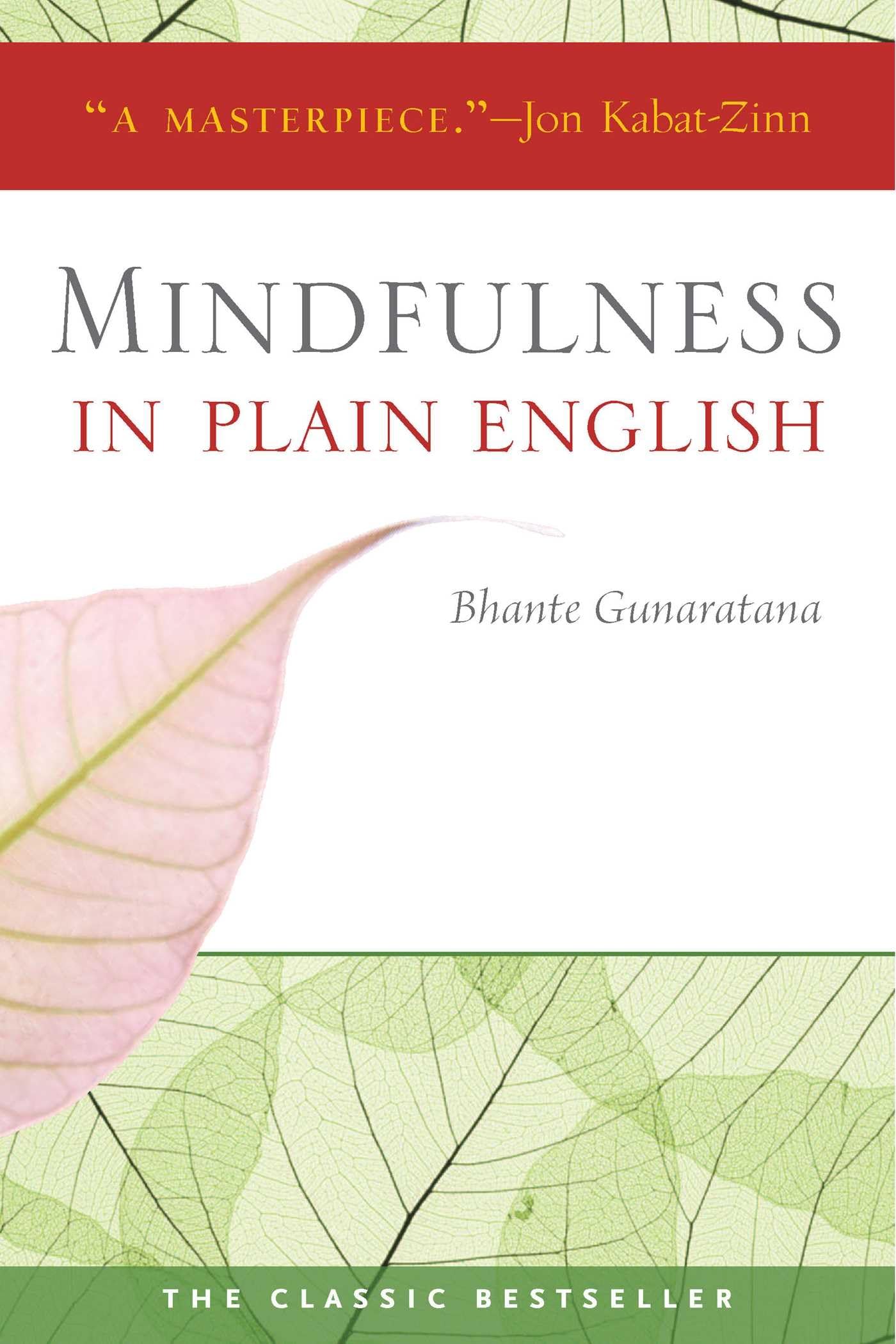Table of contents
Mindfulness represents a burgeoning interest in the cultivation of greater mental clarity, emotional regulation, and overall well-being.
At the core of this practice is the intentional focus on the present moment, often achieved through
The growing library of
These books provide readers with the tools to understand and integrate
When searching for a
Whether you’re a beginner looking for step-by-step guidance or an experienced practitioner seeking deeper insights, there’s a range of books specifically designed to meet various needs.
The key is to look for a book that resonates with your learning style, be it through anecdotal storytelling, scientific research, practical exercises, or a philosophical approach.
We must also consider the credibility of the author, with preference given to experts in the field of psychology,
These experts bring a wealth of experience and evidence-based practices to the table.
A well-structured book that gradually builds up concepts and offers applicable techniques for daily life can be a crucial factor in the effectiveness of one’s
Top Mindfulness Books to Nurture Peace and Awareness
We understand the importance of cultivating a sense of peace and awareness in the hustle and bustle of everyday life.
Our carefully curated selection of mindfulness books offers a range of insights and practices to support your journey towards mental clarity and emotional balance.
Whether you’re just starting out or looking to deepen your practice, the following titles are among the finest resources available to guide you.
Eight-Week Mindfulness

We believe this book offers valuable insights for anyone seeking tranquility in life’s chaos.
Pros
- Provides a structured eight-week program that’s easy to follow
- Offers practical exercises which can be integrated into daily life
- Backed by scientific research, offering credibility to its approach
Cons
- Some may find the practice challenging to maintain consistently
- The book’s effects are gradual and require patience
- Physical book format may not be convenient for everyone
Upon opening “Mindfulness: An Eight-Week Plan for Finding Peace in a Frantic World,” we were met with a sense of clarity.
The authors present an accessible route to
Its structured approach escorts you through eight weeks of practical exercises that aim to settle the turbulent waters of daily life.
Each week, we were tasked with new exercises, discovered our ability to find joy in small moments—much like the detailed raisin exercise which illuminated the beauty in the mundane.
The weekly audio meditations served as a guide, fostering a routine that gradually became second nature.
As we journeyed through the chapters, we also valued the scientific backing presented.
It wasn’t just spiritual talk; it was a methodical approach supported by research and case studies, reinforcing the legitimacy of the
This book is a steadfast companion for those on a path to mental serenity. However, true patience is required.
The transformation it promises doesn’t occur overnight, nor does it wave away life’s complexities with a magic spell.
Its real-world applications are abundant, yet they demand dedication and mindful repetition to truly take root.
Mindfulness Meditations

We believe “Practicing
Pros
- Expansive collection of
meditation techniques - Beginner-friendly structure simplifies practice
- Concise explanations make concepts accessible
Cons
- Some may find the step-by-step format too rigid
- Veterans in
meditation might desire deeper exploration - Lacks personalized
meditation guidance
I recently turned to “Practicing
The 75 meditations presented offered a diverse range for exploration. Each practice came with steps so clear, they effortlessly set the stage for a peaceful session, even amid the chaos of my day-to-day life.
As someone who appreciates structure, the book’s careful organization bolstered my learning.
The meditations didn’t demand vast chunks of my time, which was perfect for squeezing sessions into a hectic schedule.
The flexibility of
Despite the merits, I found the presented sequences slightly prescriptive at times.
While having a defined path can be beneficial, particularly for beginners, I missed the opportunity for a more personalized journey of
Simplify Your Mind

We think this book is a valuable tool for anyone seeking to cut through the noise of their thoughts and live more in the present.
Pros
- Offers practical techniques to tackle overthinking
- Useful for improving stress management
- Written in an accessible, reader-friendly format
Cons
- Some may find the style overly simplistic
- Could be repetitive for those familiar with
mindfulness concepts - May not resonate with every reader’s experiences
Reading “Simplify Your Mind” felt like having a conversation with a wise friend who understands the challenges of a cluttered mind.
The author’s approach to explaining the 23 techniques was enlightening and refreshing.
Applying these methods felt quite natural, and it didn’t take long to notice a shift in how we viewed and managed stressful situations.
The language of the book made it approachable.
Its compact size was perfect for slipping into our daily commute bag, enabling us to integrate reading into our routine with ease.
The exercises provided are ideal for those moments when you feel your thoughts spiraling out of control.
The book’s aim is to be relatable, but we did recognize that not every technique was a perfect fit for us.
However, the breadth of strategies ensured that we found several that truly worked.
By trying out different techniques, we were able to identify those that best suited our personal needs and made the most significant impact on our thought patterns.
Little Mindfulness Guide

For anyone seeking a concise and portable guide to stress reduction and peace, this book could be a valuable tool in creating a mindful routine.
Pros
- Easily transportable due to its compact size
- Simple, practical exercises for everyday
mindfulness - Suitable for both beginners and those with experience in
meditation
Cons
- Some may find the content too brief or desire more depth
- The required reading time before practice may be longer than expected
- Illustrations are minimal, which some readers might not prefer
Having dedicated time to peruse “Little Book of
Its small stature allows us to slip it into a bag and use it as a quick reference to ground ourselves wherever we are.
The exercises provided are clear, not demanding more than ten minutes of our time, making them a perfect fit for our busy schedules.
Our engagement with the practices outlined in the book encouraged us to incorporate moments of
We found particular value in their simplicity, which demystifies the concept of
While we enjoyed the brevity, some of us were left wanting a bit more—a deeper dive into each of the topics covered.
However, we recognize that for an introduction to the practice or as a brief respite from a hectic day, this guide serves its purpose well.
The emphasis is not on extensive learning but on brief, manageable practices that can inspire a more mindful approach to life’s moments.
The Miracle of Mindfulness

We believe this book is a valuable guide for anyone looking to enhance their
Pros
- Offers practical meditation techniques
- Encourages living in the present moment
- Thich Nhat Hanh’s writing is both accessible and profound
Cons
- Some may find the exercises challenging at first
- Lengthy anecdotes may diverge from practical advice
- Minimalist approach might not suit those looking for in-depth theory
Having recently embraced the lessons in “The Miracle of
The practical
Moreover, embracing
By valuing the moment at hand, the hustle of daily life seems significantly less overwhelming.
While our journey into
We had to show patience as we practiced breathing exercises and integrated
We came across lengthy stories within the book, intended as illustrative anecdotes. While these stories provide context to the
However, we suggest approaching these narratives with an open mind, as they do offer unique insights into adopting a mindful lifestyle.
Though the book is concise and favors a more minimalist structure, some of us were left desiring a deeper exploration into the theory behind
You Are Here

We believe you’ll find “You Are Here” to be an invaluable guide in your journey towards
Pros
- Infuses everyday life with a sense of
mindfulness - Offers practical exercises for
mindfulness - Written in an accessible, gentle style
Cons
- Can be considered repetitive by some readers
- May be too simplistic for advanced practitioners
- Lacks depth in scientific explanations
Discovering the enchantment within the ordinary, “You Are Here” transformed our daily routines into mindful practices. Thich Nhat Hanh, renowned for his straightforward yet deeply insightful teachings, bridges the gap between the mundane and the profound effortlessly.
The serene prose feels almost like a
While navigating through “You Are Here,” we recognized the simplicity of Hanh’s concepts as their greatest strength, allowing anyone to incorporate
The book includes practical
They can be conveniently woven into various aspects of daily living, from drinking tea to listening mindfully.
Although the book effortlessly lays out a path to
Moreover, some may find the concepts reiterated throughout the book, which might hinder the flow for those looking for continued novelty in each chapter.
Despite these aspects, the overall effect of the book’s wisdom on us was profound, reaffirming our belief in the power of presence.
Mindfulness in Plain English

We believe this guide is an essential tool for anyone looking to deepen their practice of
Pros
- Offers straightforward and practical guidance
- Language is accessible to beginners
- Encourages a deeper understanding of
mindfulness
Cons
- Some may prefer more advanced discussions
- May include more personal anecdotes than expected
- Certain concepts might require re-reading for full comprehension
Having spent some time with “Mindfulness in Plain English,” we found it serves as a valuable companion for those at the start of their
The author, with his clear and simple language, breaks down the intricacies of
This makes the practice more approachable and less daunting for newcomers.
As we turned the pages, it became evident that the book’s strength lies in its ability to make
The practical tips scattered throughout the chapters are easy to integrate into various aspects of our lives, from work to personal relationships.
This blend of instruction and applicability is, without a doubt, a highlight of our reading experience.
Upon further reflection, a notable observation is the book’s tendency to emphasize beginner-level content, which fosters a welcoming environment for novices.
However, even those with an established practice could find nuggets of wisdom, as the book often prompts introspection and a return to the basics, a refreshing experience we all occasionally need.
A Walk in the Wood

We believe this charming book is a must-have for anyone seeking a gentle introduction to
Pros
- Infuses
mindfulness lessons with the endearing charm of Winnie the Pooh characters - Offers easy-to-understand meditations suitable for beginners
- Beautiful illustrations that enhance the reading experience
Cons
- Some readers might prefer more in-depth, traditional
mindfulness guides - The simplicity of content may not resonate with every adult reader
- Hardcover format may not be as portable as a paperback
Upon opening “A Walk in the Wood,” we’re immediately greeted with whimsical illustrations that harken back to the lighthearted days of childhood.
As we journey through the pages, the book seamlessly weaves together the playful tales of Pooh and his friends with accessible, insightful meditations on
It’s a delightful approach to self-improvement and
We’ve found the structure of “A Walk in the Wood” particularly helpful. Each chapter ends with clear, actionable advice that one can integrate into daily life.
What’s notable is how the simplicity of Pooh’s world invites us to slow down and appreciate the smaller things, a key aspect of
It’s a refreshing take that balances childlike joy with adult self-reflection.
In our experience, “A Walk in the Wood” also serves as a wonderful tool to introduce the concept of
Reading these stories to children can spark valuable conversations about presence and gratitude.
It’s encouraging to see a book foster generational bonding over such a meaningful topic.
Mindfulness for Beginners

We think this is a valuable read for those starting their
Pros
- Offers a practical introduction to
mindfulness - Written by an established expert in the field
- Includes additional audio resources for guided
meditation
Cons
- May be too basic for those already familiar with
mindfulness practices - Some readers expected more depth from the content
- Physical book should include CDs, which may be missing in some orders
The moment you open “Mindfulness for Beginners,” you’re met with a sense of familiarity, as if Jon Kabat-Zinn is speaking directly to you.
His approach to introducing
On a personal note, the bite-sized chapters have made it easier for us to incorporate
Flipping through the pages, the book feels like a guide meant to walk beside you rather than push you from behind. Its tone is accommodating, not prescriptive, inviting you to explore
We’ve noticed a change in perspective even during mundane tasks, which speaks volumes about the book’s effectiveness.
It’s disheartening when media promised with a product is absent, and it seems this has been the case for some who ordered the physical copy expecting accompanying CDs.
We appreciate the text’s simplicity, yet some of us hoped for a deeper dive into
Nevertheless, the practical advice and clear explanations make us confident in recommending “Mindfulness for Beginners” to those new to the practice.
Its content resonates long after you put the book down, urging you to reconnect with the present moment.
Mindfulness 25th Anniversary

If you’re seeking a deeper understanding of
Pros
- Provides a fresh perspective on
mindfulness based on psychology and research. - Engages readers with relatable examples and encourages the application in daily life.
- Accessible writing style suits both beginners and those experienced with
mindfulness .
Cons
- At times, the content might seem counterintuitive to traditional
mindfulness practices. - Readers looking for straightforward
meditation guides may find this approach unconventional. - Some concepts may require rereading for full absorption due to their nuanced nature.
Unpacking “Mindfulness (25th anniversary edition) (A Merloyd Lawrence Book)” reveals a refreshing take on the subject. Langer’s work draws on extensive psychological research, offering insights into
Delving into the book, we appreciated the practical applications sprinkled throughout. The author does a splendid job in illustrating how
The book’s unconventional perspective, grounded in academic research, sets it apart from typical
Buying Guide
Understand Your Needs
Before selecting a
Understanding our personal goals will guide us toward the most appropriate content.
Content Relevance
| Feature | Description |
|---|---|
| Practical Application | The book should offer actionable advice and exercises that we can incorporate into our routines easily. |
| Theoretical Depth | For those of us seeking a deeper understanding, the book needs to explore the philosophical origins of |
Approach to Mindfulness
Different books sometimes apply distinct approaches to
- Secular vs. Spiritual: We may prefer books that take a more secular approach to
mindfulness or those that root their teachings in spiritual traditions. - Scientific vs. Experiential: If a scientific explanation helps us, we should seek books with empirical evidence. Otherwise, anecdotal wisdom might suffice.
Accessibility
We must consider our level of expertise when choosing a
- Beginners: Should look for books with clear explanations, avoiding jargon.
- Advanced Practitioners: Might prefer texts with more depth and complexity.
Format and Style
The book’s format and writing style greatly affect how we engage with the content.
| Aspect | Insight |
|---|---|
| Writing Style | A conversational tone might be more accessible, while a formal tone might appear authoritative. |
| Length and Depth | We must decide if we want a quick read packed with insights or a comprehensive guide. |
Frequently Asked Questions
In this series of frequently asked questions, we cover a breadth of information on
For those new to
Classics in the
For managing anxiety with
Best-selling




